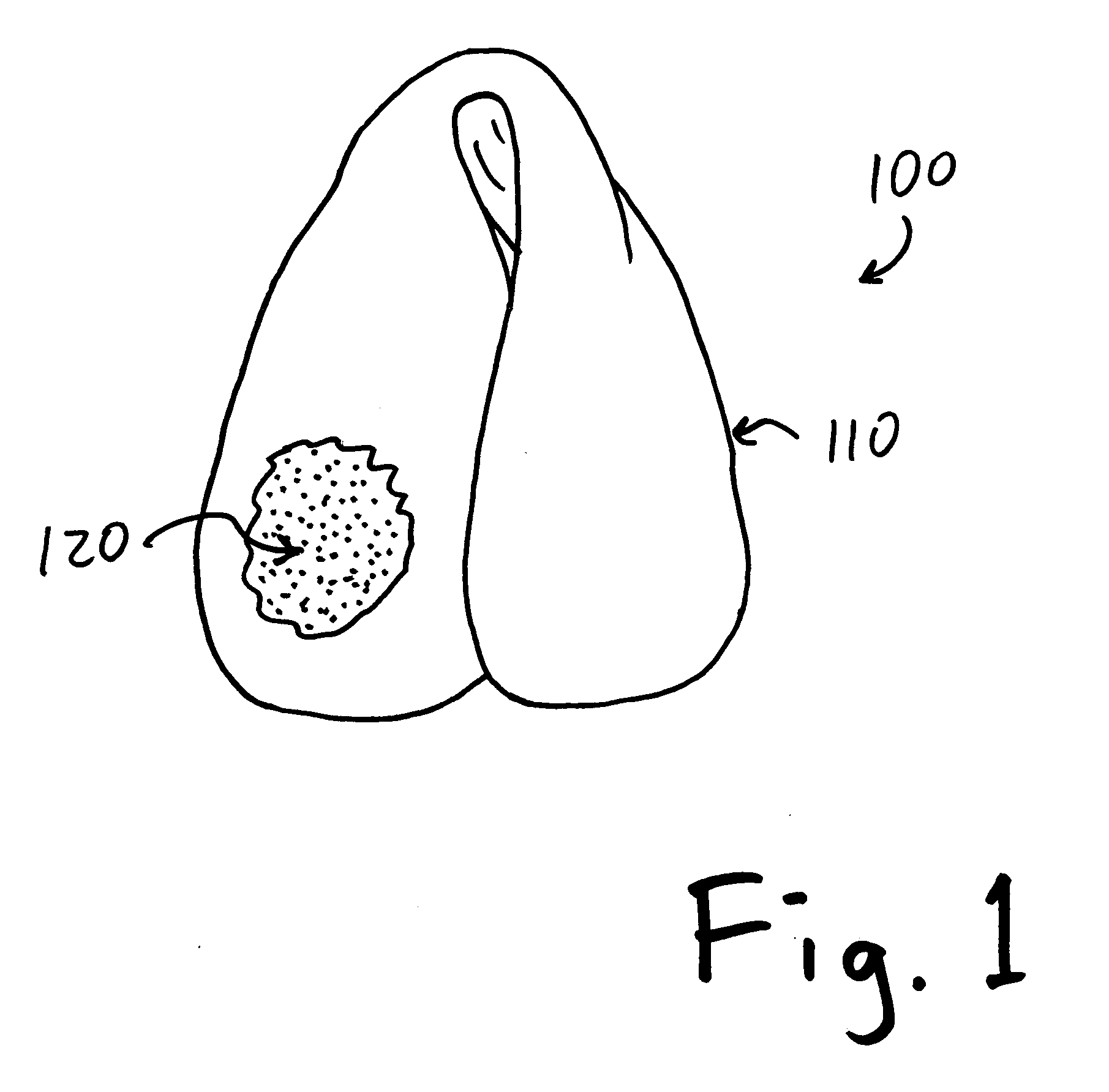Warming and cooling devices made of hypoallergenic organic materials
a technology of organic materials and heating devices, which is applied in the direction of contraceptive devices, biocides, therapy, etc., can solve the problems of inability to safely heat, limited use of gel-containing devices, and various limitations and shortcomings of all such devices, so as to achieve effective heating, relieve pain or discomfort, and high specific heat value
- Summary
- Abstract
- Description
- Claims
- Application Information
AI Technical Summary
Benefits of technology
Problems solved by technology
Method used
Image
Examples
Embodiment Construction
[0028] As briefly summarized above, this invention relates to devices that can both warm and cool (at different times) a body part (as used herein, any reference to “body part” is not limited to the trunk, and includes a limb, joint, head, neck, etc.).
[0029] These types of warming and cooling devices can be used to soothe and comfort various aches, pains, and other annoyances; when chilled, they also can reduce the swelling that accompanies an injury such as a sprain. In many cases these devices can provide substantial medical or other therapeutic benefits (such as providing substantial relief for discomfort caused by arthritis or various muscular or bone problems. Accordingly, although these devices can be purchased without requiring any type of prescription or approval, they frequently are recommended by physicians, physical or other therapists, chiropractors, etc. Since these devices have known and recognized medical uses, they are classified and registered by the U.S. Food and ...
PUM
 Login to View More
Login to View More Abstract
Description
Claims
Application Information
 Login to View More
Login to View More - R&D
- Intellectual Property
- Life Sciences
- Materials
- Tech Scout
- Unparalleled Data Quality
- Higher Quality Content
- 60% Fewer Hallucinations
Browse by: Latest US Patents, China's latest patents, Technical Efficacy Thesaurus, Application Domain, Technology Topic, Popular Technical Reports.
© 2025 PatSnap. All rights reserved.Legal|Privacy policy|Modern Slavery Act Transparency Statement|Sitemap|About US| Contact US: help@patsnap.com

